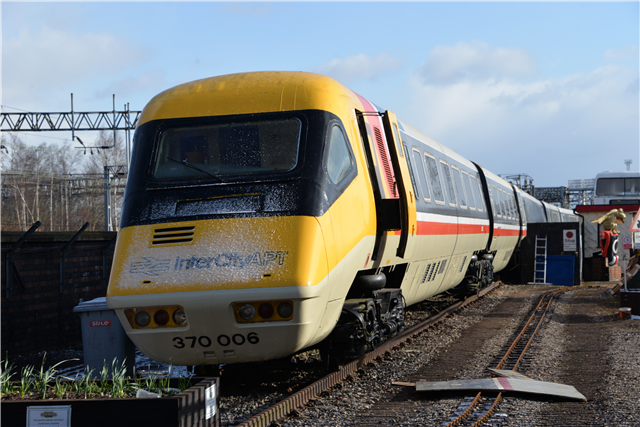British Rail's Class 370 tilting trains, also referred to as APT-P (meaning Advanced Passenger Train Prototype), were the pre-production Advanced Passenger Train units. Unlike the earlier experimental gas-turbine APT-E unit, these units were powered by 25 kV AC overhead electrification and were used on the West Coast Main Line between London Euston and Glasgow Central. The APT-P is the most powerful domestic train to have operated in Britain, the eight traction motors fitted to the two central Motor Cars giving a total output of 8,000 horsepower (6,000 kW). This enabled the train to set the UK rail speed record of 162.2 miles per hour (261.0 km/h) in December 1979, a record that stood for 23 years until broken by a Eurostar Class 373 on the newly completed High Speed 1.
The APT-P was unveiled to the public on 7 June 1978 and continued to be used for testing into 1986. Due to ongoing technical problems with these pre-production units, and a lack of cash or political will to take the project forward, the planned APT-S (Advanced Passenger Train Squadron Service) production-series units were never built but did influence the design of the later InterCity 225 sets designed for the East Coast Main Line electrification. The influence is strongest with the Class 91 locos which took many features from the APT powercars. The technology was later sold to Fiat Ferroviaria and used for improving their second generation Pendolino trains which are used worldwide, including on the West Coast Main Line as the Class 390.
All six units were withdrawn during 1985–1986, and most cars were quickly scrapped. The remaining cars are exhibited at Crewe Heritage Centre, a museum located next to Crewe station.
